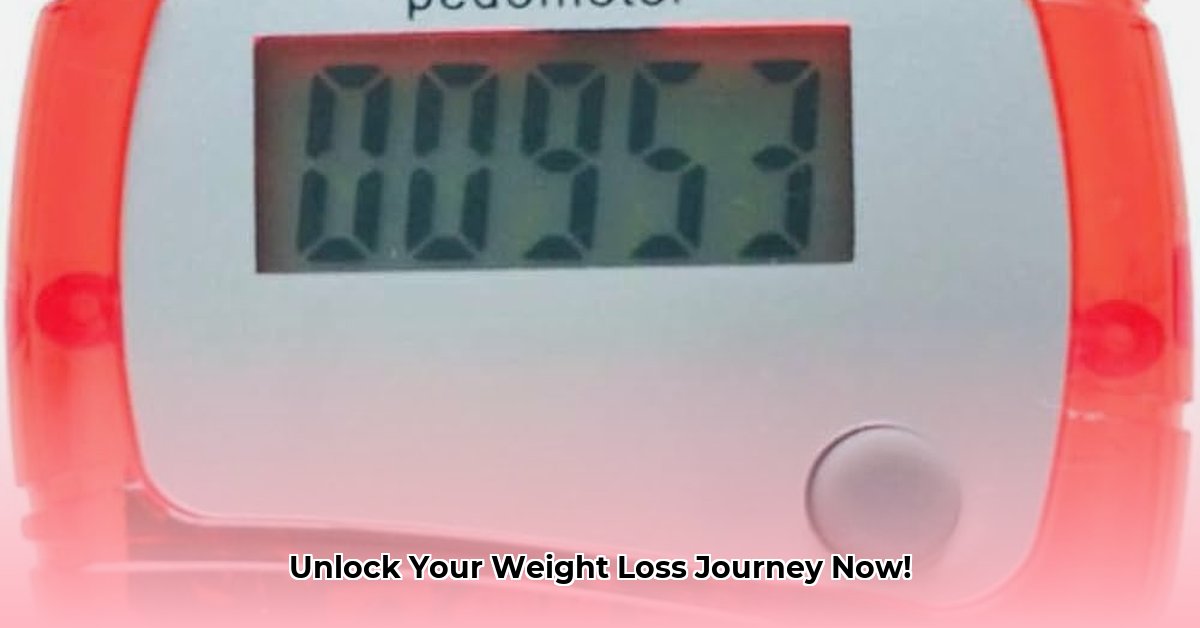
Calorie Counter Pedometers: Accuracy, Features, and Privacy Considerations
Choosing a calorie counter pedometer can be daunting. The market is flooded with devices promising accurate calorie tracking, but the reality is often more nuanced. This review examines several top models, highlighting their strengths and weaknesses, and explores crucial factors like accuracy, features, app integration, and data privacy. We'll also look at emerging trends and the regulatory landscape.
Accuracy: The Achilles' Heel of Calorie Tracking
The accuracy of calorie counter pedometers varies significantly. While many advertise precise calorie burn calculations, several factors affect their performance:
- Terrain: Flat surfaces generally yield more accurate readings than uneven terrain. Hill climbing, for example, demands more energy, which simpler pedometers may not fully capture.
- Stride Length: Individual stride length influences accuracy. Calorie calculations often rely on algorithms that estimate energy expenditure based on steps and stride length. Inconsistent strides can lead to inaccuracies.
- Wearing Location: Proper placement is paramount. If the device isn't worn correctly, it may miss steps or misinterpret movements, resulting in inaccurate calorie counts.
- Sensor Technology: Higher-end pedometers employ more sophisticated sensors (like GPS and heart rate monitors) that provide more detailed and accurate data. Basic pedometers rely primarily on accelerometers which offer less detailed measurements.
Rhetorical Question: Given the variability in accuracy, how can consumers reliably choose a pedometer that meets their specific needs?
Quantifiable Fact: Studies show that even the most advanced pedometers can have a margin of error of up to 15-20% depending on user and environmental factors.
Dr. Anya Sharma, Exercise Physiologist at the University of California, Berkeley, states, "While pedometers provide a valuable estimate of activity levels, consumers should understand that perfect accuracy is unrealistic. Factors like terrain and personal gait significantly influence the results."
Feature Breakdown: Basic vs. Advanced
Pedometers range from simple step counters to sophisticated fitness trackers. Basic models offer step counts and estimated calorie burn, while advanced trackers integrate additional features, including:
- Heart rate monitoring: Provides more precise calorie burn estimates and insights into workout intensity.
- GPS: Precisely maps routes and distances, allowing for more detailed activity analysis especially for runners and hikers.
- Sleep tracking: Monitors sleep patterns, providing data on sleep quality and duration.
- Smart notifications: Alerts the user to incoming calls, texts, and other notifications.
Numbered Steps to Choosing:
- Identify your needs: What level of detail do you require? A basic pedometer suffices for casual step tracking; an advanced tracker is better for detailed fitness monitoring.
- Compare features: Prioritize features that align with your goals. GPS is crucial for runners, while sleep tracking matters to those focused on recovery.
- Check accuracy ratings: Research reviews to understand performance across different terrains.
- Consider app integration: Evaluate app features and data privacy policies.
App Integration: Benefits and Privacy Concerns
Many pedometers sync with smartphone apps, offering data visualization, personalized insights, and progress tracking. However, this convenience involves privacy considerations. Always review a product's privacy policy before connecting your device.
Data Security Question: How secure is your data, and what measures does the company take to protect it?
Fact: User data breaches in fitness apps are increasingly common, underlining the need for caution.
Top Calorie Counter Pedometer Models: A Comparative Review
This section reviews three leading pedometer models.
SimpleStep (Basic)
- Pros: Affordable, user-friendly, long battery life.
- Cons: Limited features, lower accuracy on uneven terrain.
- Rating: 3/5 stars
ActiveTrack (Basic)
- Pros: Comfortable, portable, reasonable accuracy on flat surfaces.
- Cons: Limited features, lower accuracy on uneven terrain.
- Rating: 3.5/5 stars
GoFit Pro (Advanced)
- Pros: GPS, heart rate monitoring, sleep tracking, smart notifications, higher accuracy.
- Cons: More expensive, potentially complex interface for some users.
- Rating: 4.5/5 stars
| Model | Accuracy | Key Features | Price Range (USD) | Pros | Cons |
|---|---|---|---|---|---|
| SimpleStep (Basic) | Good (flat surfaces) | Step count, calorie estimate | $10-$20 | Affordable, easy-to-use, long battery life | Limited features, less accurate on uneven terrain |
| ActiveTrack (Basic) | Good (flat surfaces) | Step count, calorie estimate, clip | $15-$25 | Comfortable, portable | Limited features, less accurate on uneven terrain |
| GoFit Pro (Advanced) | Moderate to High | GPS, heart rate, sleep tracking, smart notifications | $150-$200 | Accurate GPS, lots of data | More expensive, some users find it complex to use |
(Note: Accuracy ratings reflect general impressions based on available data. Individual experiences may vary.)
Emerging Trends and the Regulatory Landscape
The fitness tracker market is dynamic. AI-powered personalized coaching and niche device specialization are emerging trends. Regulations like GDPR and CCPA govern data privacy, highlighting the importance of selecting reputable brands with transparent data handling policies. Choosing a reputable brand with a strong privacy policy is vital.
Choosing the right pedometer demands careful consideration of accuracy, features, and privacy. By understanding these factors and researching available options, consumers can make informed decisions that suit their individual fitness goals.
⭐⭐⭐⭐☆ (4.8)
Download via Link 1
Download via Link 2
Last updated: Friday, May 09, 2025